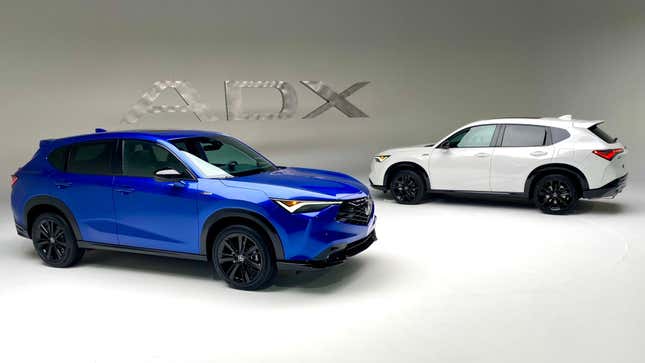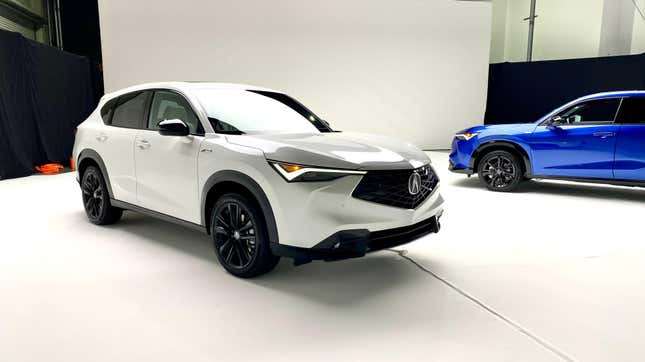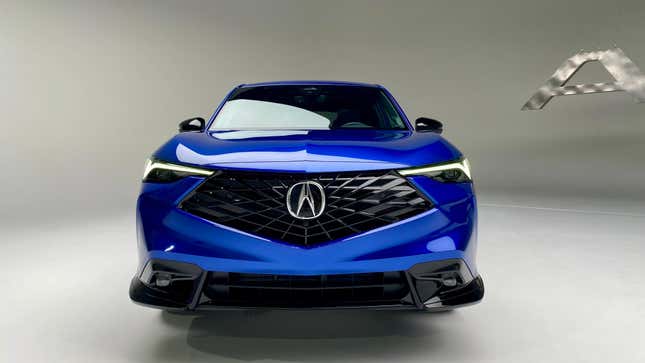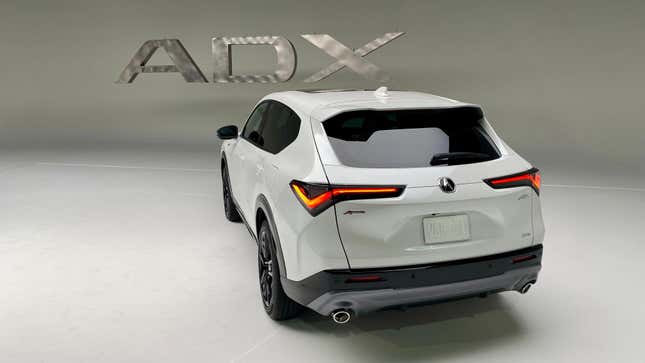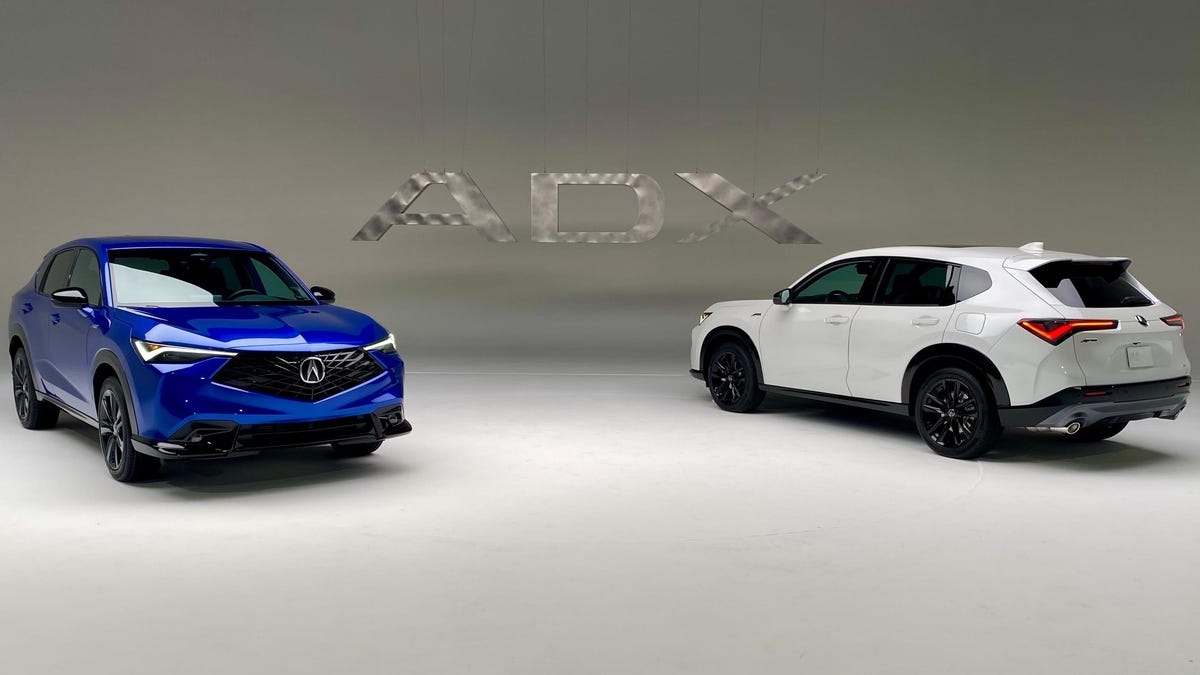Automakers seem to be cutting their truly affordable entry-level models quicker than an Iron Chef cuts an onion, but mercifully Acura is breaking that trend with its new subcompact luxury crossover, the ADX. Based on the Honda HR-V, the ADX is exactly the kind of offering Acura has needed, especially as the ADX is projected to start in the mid-$30,000 range when it goes on sale early next year.
Unlike the HR-V, the ADX shares the Integra’s turbocharged 1.5-liter four-cylinder powertrain, though it’s only offered with a CVT that has paddle shifters. Despite sharing DNA with the athletic Integra, Acura says the ADX is aimed slightly more at the luxury side of the spectrum, and it has an independent suspension setup with unique tuning. Acura hasn’t released official power or EPA figures for the ADX yet, but given the engine’s Integra roots, it will likely crank out similar power numbers to the Integra’s 200 horsepower and 192 pound-feet of torque. Front-wheel drive is standard while all-wheel drive is optional on all trims, and though it’s not Acura’s famous torque-vectoring SH-AWD system, it can still send up to 50 percent of engine torque to the rear wheels for added grip and some handling help. Most trims offer four drive modes — Snow, Comfort, Normal, and Sport — and the top trim adds a customizable Individual drive mode.
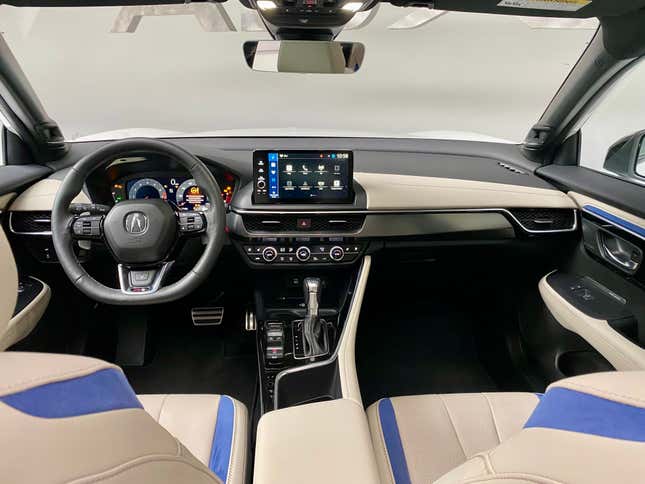
In alignment with the rest of Acura’s model lineups, the ADX will be offered in standard Premium, A-Spec and A-Spec Advanced trims. Styling is subjective, but in my humble opinion, the two A-Spec with Advance Package models I previewed are cute little crossovers with some aggressive cues. From the front it gives “Honey I shrunk the RDX,” and the rear is intriguing. You can definitely see the HR-V DNA in the ADX’s proportions rear end, but it’s still uniquely Acura. I love the body-colored aerodynamic elements that frame the rear window from the sides, and the aggressive spoiler. If that’s still not aggressive enough for you, Acura offers a funky ZDX-esque mid-tailgate spoiler, which likely doesn’t aid much with downforce but makes it even more of a distinctive offering in an otherwise somewhat bland segment. Behind that unique rear styling is class-leading cargo capacity, another feather in the ADXs hat.
Standard features include a power tailgate, a 10.2-inch digital gauge cluster, a 9-inch touchscreen infotainment display with wireless Apple CarPlay and Android Auto, and a wireless charging pad. Upgrading to A-Spec gets you a panoramic sunroof, ventilated front seats, sportier interior trimmings, 19-inch wheels and a four-way power passenger seat. Taking things to the top Advanced trim really dresses up the place with a 15-speaker Bang & Olufsen stereo system, surround-view cameras, parking sensors, remote start, a heated steering wheel, Google and Alexa built-in, and a 12-way power driver’s seat.

Acura’s active-safety features are standard on all ADXs, including blind-spot monitoring, lane-keeping assist, automated emergency braking, adaptive cruise control, lane-departure assist, traffic jam assist, traffic sign recognition and a rear cross-traffic monitor.
Given the ADXs proposed mid-$30,000 starting price and its extensive list of standard features, I think the ADX will be an easy vehicle to recommend. The interior is on par with its competitors like the Lexus UX, Audi Q3, BMW X1, Volvo XC40 and Mercedes-Benz GLA, to name a few. Expect to see the ADX in Acura showrooms in early 2025. We’re not sure why it’s taken Acura so long to unveil an entry-level SUV, and we haven’t driven the ADX yet, but if Acura injected some fun into this practical little crossover, then it might just have a big hit on its hands.
